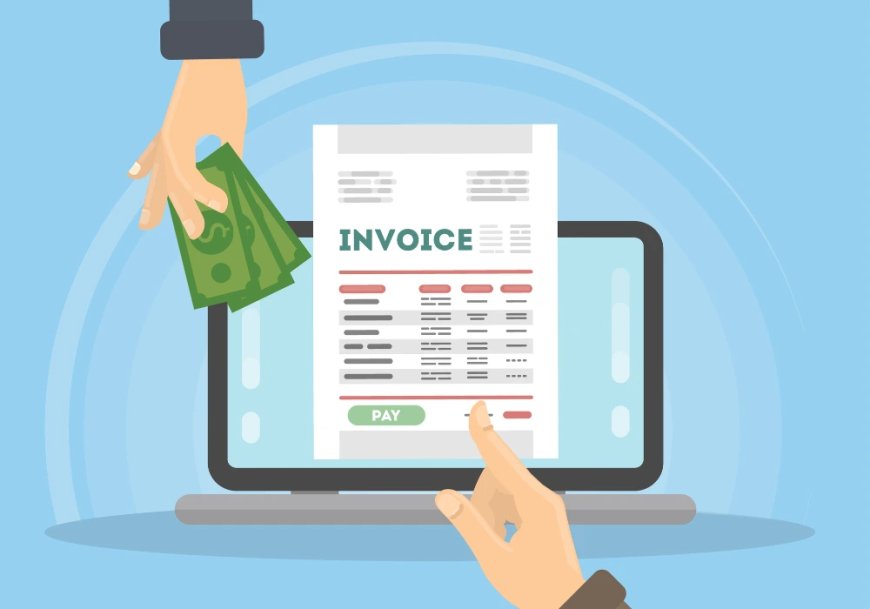Common Mistakes to Avoid When Implementing E Invoicing Software

E invoicing software is transforming the way businesses handle billing and compliance—especially in regions like Saudi Arabia, where digital transformation is rapidly reshaping financial operations. Yet, despite its clear advantages, implementing e invoicing software can be challenging if not handled correctly. Mistakes during deployment can lead to inefficiencies, compliance issues, and even financial losses.
Whether you're a small business owner or a finance leader at a large organization, understanding these common pitfalls will help you make the most of your investment in e invoicing solutions.
Not Understanding Local Regulatory Requirements
One of the biggest mistakes businesses make is failing to align the e invoicing software with local government regulations. In Saudi Arabia, for instance, the Zakat, Tax and Customs Authority (ZATCA) has rolled out a multi-phase e invoicing mandate, requiring compliance with structured formats, archiving rules, and secure integration with government platforms.
Implementing software without checking if it complies with these local mandates can result in penalties and disruptions to your invoicing process. Always select a solution that is ZATCA-compliant and capable of adapting to future regulatory changes.
Choosing the Wrong E Invoicing Software for Your Business Size
Not all e invoicing software platforms are created equal. Some are designed for enterprise-level operations, while others are tailored for SMEs or freelancers. A common error is choosing a system that's either too complex or too limited for your business needs.
For example, a small business might struggle with a bulky ERP-based invoicing system, while a growing enterprise might find a basic cloud invoicing tool inadequate for handling bulk transactions and integration requirements.
When choosing a solution, consider:
-
The number of invoices you process monthly
-
The size and structure of your finance team
-
Your need for automation and integrations
-
Scalability for future growth
Failing to Plan for Integration with Existing Systems
Your e invoicing software should not operate in isolation. One common mistake is underestimating the importance of integration with your existing ERP, accounting software, or CRM system. Without proper integration, you risk data duplication, errors in reporting, and increased manual work.
Before you deploy, ensure the software integrates smoothly with your current stack—whether it's SAP, QuickBooks, Zoho, or other tools. Look for solutions with API capabilities or native integrations to reduce friction and streamline your workflows.
Ignoring User Training and Change Management
Even the most powerful e invoicing platform won't bring value if your team doesn't know how to use it effectively. Many companies invest in software but overlook the need for proper training and change management. The result? Delayed adoption, frustrated employees, and a lower return on investment.
Create a rollout plan that includes:
-
Hands-on training sessions for relevant teams
-
Clear documentation and guidelines
-
A feedback mechanism to identify bottlenecks
-
Support from the software vendor during transition
Investing in people is just as important as investing in the tool.
Underestimating the Importance of Data Quality
E invoicing relies on structured data formats like XML or UBL. If your existing customer, product, or tax information is inconsistent or incorrect, it will lead to invoice rejections, processing delays, or compliance issues.
A common mistake during implementation is importing legacy data without cleaning or standardizing it. Before you migrate data into your new e invoicing system, ensure:
-
Customer information is up to date
-
VAT numbers and tax codes are correctly formatted
-
Product SKUs and unit pricing are accurate
-
Duplicate entries are removed
Clean data upfront means fewer headaches down the line.
Not Considering Mobile and Remote Capabilities
With remote work becoming the norm, it's essential that your e invoicing software supports mobile access and cloud-based operations. Yet, many businesses still opt for on-premises solutions or platforms that lack mobile functionality—limiting flexibility and responsiveness.
A cloud-based e invoicing system allows your team to:
-
Access and send invoices on the go
-
Collaborate across departments
-
Stay compliant from anywhere
Look for platforms that offer responsive web portals or dedicated mobile apps for iOS and Android.
Overlooking Security and Backup Measures
Security is a critical aspect of any digital transformation, especially when dealing with sensitive financial data. Some businesses implement e invoicing software without ensuring it meets modern cybersecurity standards.
Key questions to ask before implementation:
-
Is data encrypted in transit and at rest?
-
Does the vendor offer two-factor authentication?
-
Are there regular backups and disaster recovery protocols?
-
How does the system handle user access and audit trails?
Neglecting these aspects could expose your business to data breaches or invoice fraud.
Forgetting to Monitor and Optimize After Go-Live
Many organizations treat implementation as a one-time event. They go live with the software and assume the job is done. In reality, ongoing monitoring and optimization are vital to ensure continued performance and compliance.
After launch, take time to:
-
Monitor KPIs like invoice approval time, error rates, and late payments
-
Collect feedback from users and stakeholders
-
Regularly review changes in tax regulations
-
Schedule software updates and vendor reviews
By continuously improving your e invoicing process, you'll unlock greater efficiency and cost savings.
Relying Solely on Manual Customization
Another trap is relying too heavily on manual customization or workarounds to make the software "fit" your workflow. This can result in unstable configurations, software bugs, and complications during updates.
While customization can help tailor the system to your business, it should be balanced with out-of-the-box functionality. Choose a vendor that offers configurable workflows without the need for deep code-level changes—or offers support to maintain custom scripts professionally.
Not Vetting the Software Vendor Thoroughly
Choosing the right software vendor is just as important as the software itself. Businesses often rush into contracts based on price or brand recognition without researching the vendor's reputation, support quality, or local experience.
Look for a vendor that:
-
Has experience working with businesses in Saudi Arabia
-
Offers local support or Arabic-language assistance
-
Provides long-term product updates
-
Has a strong client base and verified testimonials
Reading case studies or talking to existing users can provide valuable insights before you commit.
Conclusion: Avoiding Mistakes Maximizes ROI
Implementing e invoicing software offers tremendous benefits—from faster payments to improved regulatory compliance—but only if done correctly. Avoiding the common mistakes discussed above will help your business transition smoothly and get the most out of your digital invoicing strategy.
What's Your Reaction?



























































